 Vulcan calligraphy is an honored tradition dating back to the ancient past of the planet—preceding Surak by a thousand or more years.
Vulcan calligraphy is an honored tradition dating back to the ancient past of the planet—preceding Surak by a thousand or more years.
All documented early Vulcan writing was logographic. Like Chinese characters or Egyptian hieroglyphs of Terra, individual words were originally represented by discrete symbols. This is the case for the ancestry of both of the two primary surviving traditions.
In modern usage it is quite common for socially prominent members of society to display a select subset of these ancient symbols on their clothing and they are used extensively on the robes, headdresses, and ceremonial objects associated with katric disciplines. Among the most common are rata, tapan, and tafar representing the intellectual ideals of concept, mental discipline, and cerebral process.
When seen in this fashion, these figures are understood by Vulcans in their historic context and thought of in their logographic or “full word” sense. With rata, tapan and tafar, three different symbols are abstracted to represent three different complete words much as a picture of a lightbulb might represent the abstract representation of the FSE word “idea”. Or, three self-referential arrows—the head of each pointing at the tail of the one preceding it—all in the single shape of a triangle might represent the Terran practice of “recycling”. They can be thought of as iconographic—a front-end visual simplicity representing a rich, more complex history and meaning in the background.
However, while visually attuned to its ancient past, modern calligraphy used for the common transfer of information is largely reformed into a phoneme-based glyph system that is essentially alphabetic. This is the case for both of the surviving traditions, which are called vanu-tanaf-kitaun (ceremonial calligraphy) and gotavlu-zukitan (standard script). This article will focus on the more ornate ceremonial calligraphy, of which comparisons to Terran musical notation are often made. Note that the name vanu-tanaf-kitaun references the act of doing calligraphy as a practice, while gotavlu-zukitan refers more to the figures of the script itself.
The sample at the head of this article is the name vanu-tanaf-kitaun written in the calligraphic script.
Origins
Vulcans take great pride in the origins and beauty of their orthographic traditions. Their systems have evolved over time to suit the needs of a highly logical and technologically sophisticated culture.
This illustration compares the two primary writing traditions of ancient Vulcan. Both examples are thousands of years old. On the left are the three classic words in the “musical” script, which even after modern reforms is still the most complex calligraphic style in contemporary Vulcan society. The examples on the right are from the grandparent logograms that—with few modifications—are still used today for writing the language. However, as mentioned previously, the modern usage when applied to everyday texts is phonetic, not iconic. Of course, there are still Vulcan scholars and calligraphers who are students of the ancient texts and who are skilled at both reading and writing the historic forms. And, these particular three words might easily be recognized by average Vulcans due to their legacy in everyday life. But, most ancient writing in this lefthand style (vanu-tanaf-kitaun) would be opaque to non-specialists. All Vulcans are familiar with the origins of the glyphs on the right because they have been recycled from logograms (bikuv-kitaun) into discrete letters (nuhm) for the modern script. The historic words have become the letter names of the modern sounds of the script. This system will be covered in a separate article. There is also a third system in common use for informal handwriting. It is considered purely utilitarian and rarely ever seen by non-Vulcans. It will also be addressed in a separate article.
Writing Direction
Historically, Vulcan writing comes from purely vertical traditions. This is generally reflected in the letterforms themselves. However, in modern writing—influenced by modern logical standards—all Vulcan nuhm are positionally independent. Unlike the Roman alphabet of FSE, which distinguishes between b and p (when flipped vertically) or b and d (when flipped horizontally), no Vulcan nuhm can become ambiguous based on writing direction, and in fact, several of the consonant cluster glyphs that the reader will find below are intentionally designed using nuhm that are flipped and/or rotated in the process of compounding. Texts can be written vertically right to left (most traditional); vertically left to right (common in conjunction with Federation technology systems when blocks of text are involved); horizontally left to right (when words are mixed with FSE contexts); horizontally right to left (when mixed with scripts which are normally configured in that orientation). Decorative contexts are the only scenarios in which it appears vertically bottom to top, or in other patterns—such as circles. Longer blocks of text typically begin with a kharat-ulidar (direction marker), colloquially called the patam (head).
The patam orients the reader unambiguously as to the direction of the writing. It also sets a formal tone and imbues the text with a sense of propriety and respect. It is not incorrect to write a block of text without a patam because the shape of the nuhm themselves and the way they flow from one to the next in words also show this clearly, but it is often considered lazy to omit it. A proper announcement or letter would never begin without one. Computer displays or other non-formal contexts do not require following this historic protocol.
There are stylistic variations in patam. Calligraphy masters have their own original designs which are traditionally registered with the Shi’Oren t’Ek’Iyula-Visak’a T’Khasi (Vulcan Academy of Cultural Heritage, colloquially SHOTEIV). These serve as a signature or seal to identify the artist, and by reputation, the significance of the artwork. The patam used most commonly here is a generic one with no artistic attribution and is appropriate for any typical letter or manuscript written by anyone.
The Spine
Vulcan nuhm in the tanaf-kitaun (calligraphy) style are oriented along a central line called the kitaun-zehl (writing line) or colloquially, plat (spine/backbone). The essence of the plat is designed into many of the nuhm overtly, either continuously or segmented across the height or width of the letter, depending on writing orientation. Vulcan children learn to write tanaf-kitaun on lined materials or learning tablets that display the plat as s guide. Adults must be able to write based on an imaginary line and this can be challenging, because a part of the beauty of this style is the asymmetry of many of the curves incorporated into the individual nuhm. More advanced calligraphers mavau (play) with the asymmetry effortlessly without disturbing the krilan-vo’ektaya (harmonious equilibrium) of the composition—colloquially referred to as sochya (peace). Here are some examples of nuhm which require great care to place properly on the plat while maintaining sufficient sochya.
Each part of the nuhm has a relationship to the plat. In this illustration, the vertical orange line is the plat. Other part names are called out on a case-by-case basis. All consonants have a tuf (chest), but this term is not used for vowels. In consonant clusters with a leading small consonant, the upper portion is called tarkiv (crown). In the nuhm that corresponds to the FSE h, the upper halo has a unique name, taik (hat). However, the harr (tail) that hangs down is common to many consonants and it is a wu-harr (long tail) that terminates complete phrases and sentences. The following (lower) smaller consonant in a cluster is referred to as ash’ya (foot). Any distinguishing motif within the tuf itself is called the tviyan (core). The equivalent of FSE t, does not have a tviyan because it is essentially empty. Notice that the tviyan (the inner oval) of sh is not centered perfectly on the plat. This is a part of the natural sochya of sh. It would be referred to as nuh’stegelik (excessively stiff) if the center oval were precisely alined on the plat. The same criticism would be made for the oval of the tuf of l if it were 50/50 to the left and right of the plat.
These are other common critiques that teachers might make of their students’ work regarding the overall balance of the nuhm.
Tarkiv nuh’suk | nuh’pi’. — The crown is too big/too small.
I’gal-tor tarkiv na’los’rak | na’gas’rak. — The crown is leaning to the left/to the right.
Ash’ya nuh’thelik | nuh’wonilik. — The foot is too fat/too thin.
Zehl-sebastak nuh’stegelik. — The line tension is too stiff (meaning that the line thickness variation is unnatural or forced; not flowing freely enough).
Provula’voh va’ashiv. — Try again, Sir/Ma’am (with ironic formality).
Wa’maf-tor Snovekh. — Snovek sobs.
Snovek was a contemporary of Surak and is generally regarded as the first great Vulcan calligrapher whose work and reputation have survived into modern times. He was renowned for his self-restraint and meditative approach to the art. It is an extremely critical claim that one’s work would be bad enough to cause Snovek to cry. A teacher would only say this to a student who is clearly putting little or no effort into his or her exercises. The converse of of this epithet, Wa’limatau Snovekh (Snovek grins.) implies that the work is excellent. It is the highest kind of praise ever said to a student who is succeeding. Naran and Punar-tor (meaning that the work is “acceptable”) are more common.
The Journey
The act of writing a single nuhm (letter), zhit (word), pi-zhit-bal (phrase), zhit-bal (sentence) or nahptra (paragraph) is referred to metaphorically as ohalovaya (the honorable journey). The initial point where the writing implement is placed down is called the trashan (departure). The final destination is the kelek (home). If the quill or pen must pause, be lifted, and then begin again to reach kelek successfully, that point is a shom-sfek (resting point). The second departure is the dahr-trashan. A third lifting of the pen and restarting would be the rehr-trashan, etc. The overarching goal is to lift the pen as few times as possible and complete the path of the journey fluently and without stumbling.
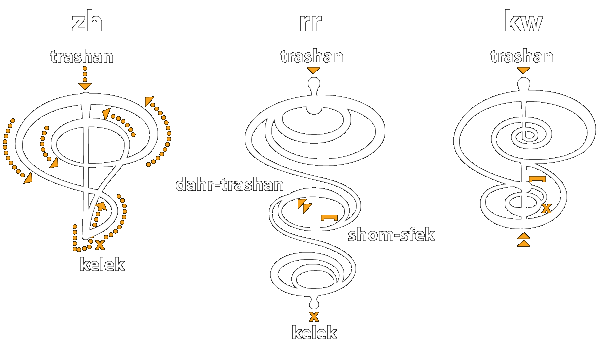 In the example above the halovaya for zh should be completed in one fluid motion. Rr and kw each require a shom-sfek and dahr-trashan. It’s interesting to note that it is possible for an individual nuhm to have more than one yut (path) on the overall journey. Calligraphy masters often make their mark by imparting subtle differences to the letterforms by taking different paths along the way and teachers do not scold their pupils for experimentation as long as it does disturb the sochya of the composition. Kelek is always the ‘destination’. If writing an entire paragraph, the kelek is not reached until the calligrapher pauses at the end of the text that he or she originally intended to complete when the pen first departed on the journey.
In the example above the halovaya for zh should be completed in one fluid motion. Rr and kw each require a shom-sfek and dahr-trashan. It’s interesting to note that it is possible for an individual nuhm to have more than one yut (path) on the overall journey. Calligraphy masters often make their mark by imparting subtle differences to the letterforms by taking different paths along the way and teachers do not scold their pupils for experimentation as long as it does disturb the sochya of the composition. Kelek is always the ‘destination’. If writing an entire paragraph, the kelek is not reached until the calligrapher pauses at the end of the text that he or she originally intended to complete when the pen first departed on the journey.
If students struggle with the journey, teachers often quietly come by, reach in and annotate suggested paths. See rr and kw above. However, it is the student’s ultimate responsibility to find his or her own way and ovsoh ohalovaya k’sochya hiyet (complete the honorable journey with sufficient peace).
Vowels
Vowels in this system, called ikatu’azun, have design characteristics that are unlike the consonants. In terms of the journey, it is necessary to pick up the writing implement much more often and add small strokes that readily define important differences between the 20 distinct sounds. Four diphthongs (ai, au, ei, oi) are treated like discrete vowels in the system and the shaya-ralash (break sound) that is commonly written between consonants as an apostrophe in the FSE alphabet (cf: T’Khasi) is categorized in this subset based both on its function and physical design.
The primary relationship of the vowels to their consonant siblings is through the yut (the path) that connects visually at the plat. In the case of the i-based and e-based vowels, the yut is simply a straight line. It does not curve at all, but is intentionally broken for e, eh, ee, ih, ii, and ei. Most ikatu’azun also contain one or more tuhs-yut (crossroads). These are horizontal lines that bisect the yut. They can only be added by a shom-sfek (a stopping and picking up of the pen). Finally, all of the vowels (with the exception of the shaya-ralash) contain glat-kov (sign stones/landmarks). These are rendered as small ovals or dots and they help the eye distinguish between the different vowels.
You may be asking yourself why does something as simple as an a or a u need to have so many pieces and parts? The answer is that this calligraphic style of writing is not about need or efficiency. It is about tradition and the goal of creating writing that is visually interesting and beautiful. The other two orthography systems are much more efficient than this one.
Usage
While this style of writing is clearly calligraphic and ornate, it can be read (though not written) by all educated Vulcans. And, even though the origins and most relevant contexts for this style of writing are artistic, it is in common use for the everyday transfer of information as well. Vulcan technology systems use advanced algorithms to determine in which orientation, density and resolution it should be rendered based on other textual and visual information presented in the relevant context, and users can typically verbally instruct most computer interfaces to adjust the text stylistically simply by saying the name of a SHOTEIV-registered Vulcan calligraphy master or the name along with a specific tradition. (NB: The style (which might be thought of as a hiktra (typeface/font)) displayed here is commonly referred to as Mazhiv t’Snovekh (Snovek’s Sands) and is based on writing in a cleanly raked, dry bed of sand with a stick featuring a rounded tip. The writer typically fashions the stick in an ad hoc fashion by burnishing the tip on any appropriate stone which happens to be available.
This overall style of calligraphy is also more common than the standard script in ornamental and other decorative contexts. It might even appear on the walls of an average Vulcan home or decorate the rim of a glass or edge of a round plate. However, it should never be written and displayed in a casual, haphazard, lazy fashion. That is considered disrespectful to the living and ancestral masters.
The Nuhm Inventory
The following tables document all nuhm from the vanu-tanaf-kitaun series. There are 113 in common usage (introduced here), but others for archaic terms and pronunciations appear from time to time. The large volume of glyphs is generated by consonant clusters that are often syllable-initial or final. In one case there are two variations of one compound, ks (also seen occasionally as represented by an FSE x). One is used for syllable-initial context and the other for syllable-final. Please note that clusters are not used across syllable boundaries. Example:
Kastra is a two-syllable word meaning “vegetation/flora”. The syllables break as kas.tra between the s and t. Strachau is a two syllable word meaning “to knit”. Its syllable break as stra.chau between the a and ch, which is a single nuhm. In the case of kastra the s sound belongs to the ka that comes before it so it is not compounded directly into the tra that follows. In the case of strachau, however, the s is a part of a complex consonant cluster. The s, t, and r all belong to the a that follows them, so they are one compound. It would be wrong to spell kastra as Ka.sTra. While legible, it would also be wrong to spell strachau as STra.CHau or STRa.CHau. (Note: there are no capital letters in the calligraphy, but proper nouns are marked. This will be discussed later in this article. Here the capitalization is used to mimic the size differences of the parts of the nuhm as properly conjoined in the calligraphy. This is a convention for those approaching the study of this writing via FSE and is generally not relevant to a purely Vulcan study experience.)
Note that the following order is that of FSE, not traditional Vulcan calligraphy. Also, the “o” that is used in the letter names is only to make them easily pronounceable. A teacher may instruct the pupil >I’kita’uh nuhm lo reh-wak.< (Now write the letter ‘l’ 3 times.) As ‘l’ is pronounced ‘el’ in FSE, the Vulcan nuhm for ‘l’ is pronounced lo in Golic Vulcan. If the instruction for the journey were to write the full sound ‘lo’, the teacher would more likely say >I’kita’uh zhit-shaya lo reh-wak.< (Now write the syllable ‘lo’ 3 times). None of the consonantal nuhm inherently contain any vowel sound. The vowel and diphthong names are simply the vowels or diphthongs pronounced as they sound.
Foreign words in Golic Vulcan (eg: hors from FSE “horse”) are often spelled without traditional ligatures. The calligrapher may decide to render this as HoRs (creating an ad hoc compound which is not a part of the formalized clusters) or HoRS. Either would be perfectly acceptable.

Names & Punctuation
There are no capital letters in vanu-tanaf-kitaun. Proper nouns (names of people and places) are marked with the ahm-glat (![]() ) which means “name sign”. It precedes all the other nuhm in the word. There is no distinction between the ahm-glat for people vs. places, but different calligraphers do play with the proportions and often embellish the ahm-glat as a function of their individual style.
) which means “name sign”. It precedes all the other nuhm in the word. There is no distinction between the ahm-glat for people vs. places, but different calligraphers do play with the proportions and often embellish the ahm-glat as a function of their individual style.
In the following 2 sentences these two words, a man’s name and horn/antler appear in context.
The text reads: Stal Stonn le-matya k’stonn ik tal-tor svi’mazhiv po’ta zeshal aushfa mal-nef-hinek t’sa-veh. Ish-wak svi-aru.
Translation: Stonn killed the le-matya with an antler that he found in the sand after the animal bit his kneecap. It was mid-afternoon.
The second sentence appears as the final line at the far right. The distinctive curves and swirls that extend across multiple nuhm are called tel (bond). They call out the compound words that are normally hyphenated when Golic Vulcan is written in the FSE alphabet.
Stal Stonn le(1)matya k’stonn ik tal(2)tor svi’mazhiv po’ta zeshal aushfa mal(3)nef(3)hinek t’sa(4)veh. Ish(5)wak svi(6)aru.
Of these, (2), (3), (5) and (6) deserve some special explanation. The (2)nd one is irregular because the word is split across two different lines. This is very unusual, especially in longer texts in a smaller size type, but can occur. (3) is the same, but additionally complex due to the fact that it is a 3-syllable word. Numbers (5) and (6) are interesting because they do not begin and end in the standard simple fashion, but have extra embellishments decided by the calligrapher. The only strict rule of of tel is that they must cross the plat where a pakh (stroke (hyphen)) would normally occur in the flow of text. Typically, in a two-word compound they are begun at the immediate right-hand side or from the center of the tuf (chest) of the first nuhm in the word and proceed in a smooth curve across the plat and terminate to the immediate left or in the center of the tuf of the last letter in the 2nd word. In a three-word compound the tel crosses the plat twice. In the 3rd example here a three-word compound crosses two lines of the text so the tel runs in an irregular flow up to the top of the 2nd line and then normalizes its flow. The extended run of the tel in (5) and (6) are more typical at the end of a text, but can be used in other contexts at the calligrapher’s discretion. Tel are not technically necessary for meaning, but are a part of the legacy of the tradition of vanu-tanaf-kitaun. Additional embellishments (such as horizontal ticks) along the tel are also acceptable, but generally not added by novices as they are generally a reflection of a deeper understanding of the ancient traditions and non-phonetic meanings of the original figures.
The triangles that point right at the bottom of many of the lines indicate that the line (sentence) continues. These are called glat t’fator’es (signs of continuation) or colloquially, kliton (arrows). They are often omitted in more artistic works.
With the exception of the first line that hangs from the patam, the subsequent lines that continue the same sentence hang from a mark colloquially called kik (hook). The style shown here is very standard, but many variations exist and this is one of the areas where calligraphers mavau (play). The mark that begins the final line indicates that this is a new sentence. It is colloquially referred to as a fo (shell). Like the kik, it comes in other shapes and sizes, but the one shown here is universally recognized and standard.
There is no period. Instead the final stroke of the journey of the sentence is extended into what is colloquially called a wu-harr (long tail). A wu-harr followed by a fo at the top of the next line unambiguously indicates the start of a new sentence.
Individual words are separated by a clean stroke which is roughly 3/4 the length of a typical single nuhm. Where a tel will cross the plat, a stroke of roughly 1/2 that length is inserted—the calligrapher knowing that the tel will come later. Vanu-tanaf-kitaunsu (calligraphers) must not only be able to produce beautiful forms, but they have to be in a constant state of visualizing how their writing will progress 2 to 3 lines ahead on the path of the journey. Only thorough this prescient approach to composition can they achieve optimal sochya.
The most common mathematical paradigm in Vulcan science is base 10 as it is in FSE for humans. The numerals (su’us-nuhm) share certain traits with the alphabetic nuhm, but each is unique.

There are other punctuation conventions used of the FSE equivalent of commas, direct quotation, and other norms. They will be covered as an addendum to this article or in a separate one in the future.
Click the image below to access a glyph overview of all traditional Vulcan writing letters in the traditional order.
Comments and questions are welcomed and encouraged below.

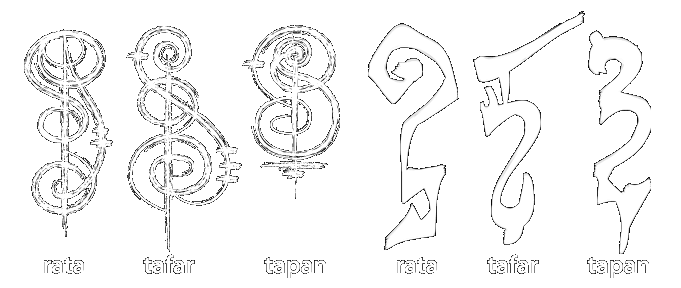
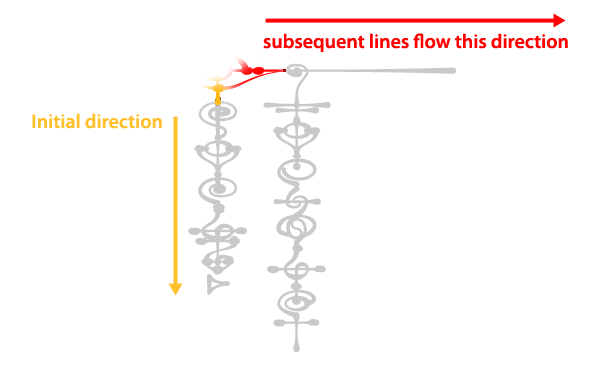


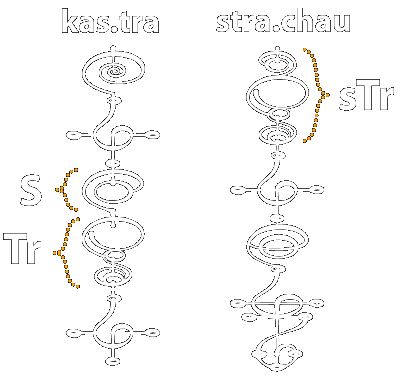
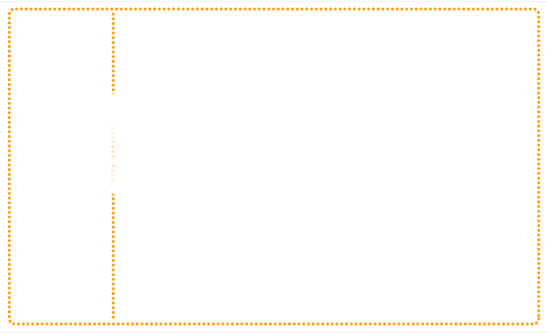
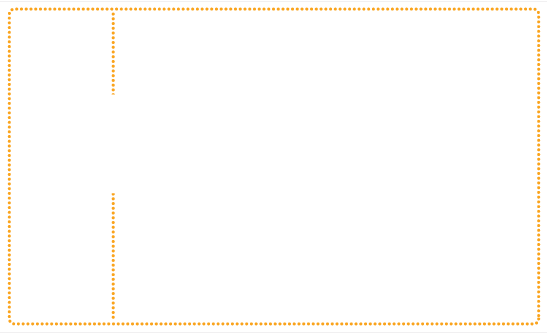
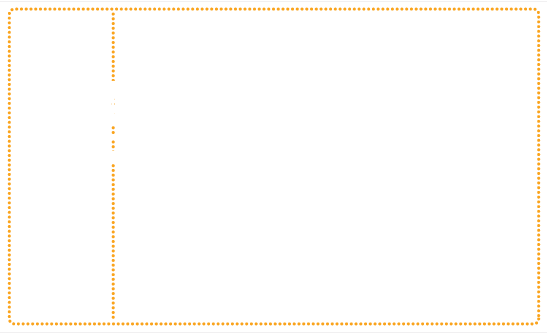

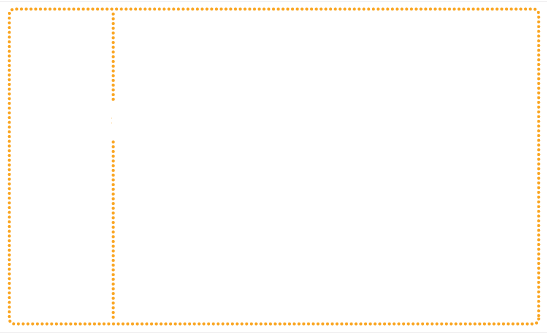

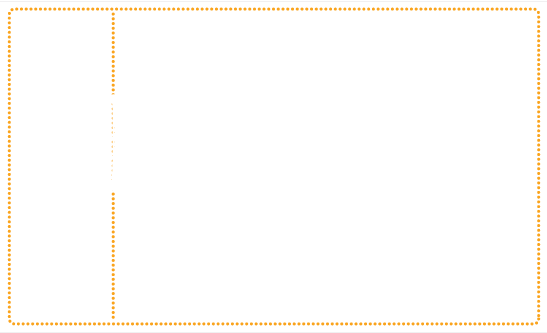
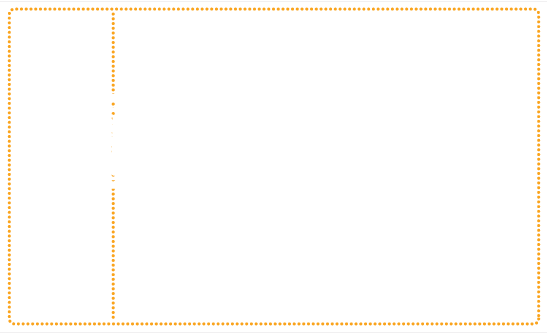
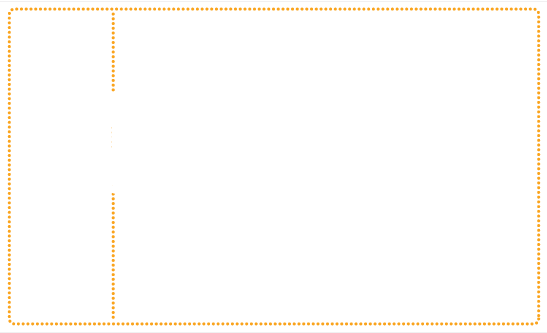
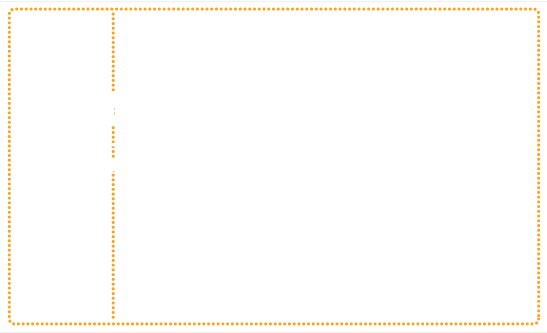



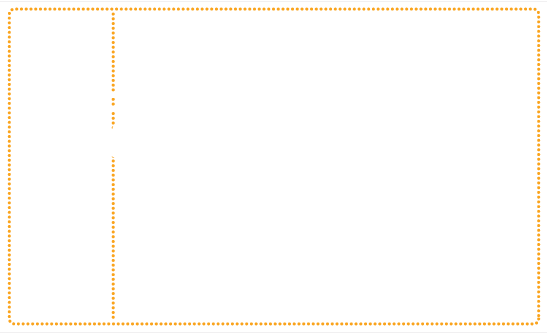



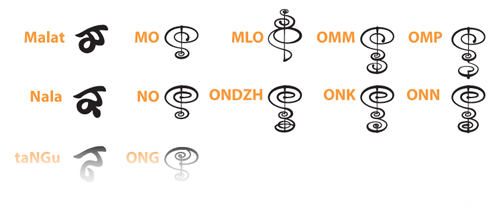

Pingback: Wa’na’shau Kanok-veh.. | korsaya.org
Very interesting indeed! That writing system / calligraphy looks stunningly amazing. I wonder if you can really learn to fluently read it with all the curves and similar looking letters / combinations.
I could be wrong but I think in your examples of «go» and «ho» the «ha’gel» misses the horizontal line for the «shaya-ralesh» … just something I’ve noticed.
Keep up the cultural work ^^
I could be wrong but I think in your examples of «go» and «ho» the «ha’gel» misses the horizontal line for the «shaya-ralesh» … just something I’ve noticed.
oDu ni yeht – oPluhmps.. (Ngaru tìyawr, ma Plumps!) You are so correct!
Wa’itaren ta sasfekaun du. (Tsaria ngal wolìntxu seiyi irayo.) Thanks so much for pointing it out. Ak’teslau nash-veh. (Zeykìyo oel.) I’ll fix it soon.
I’m glad that you like the system. It’s not meant to be easy, so it will be interesting to see if there is any noticeable proliferation.
Come back often!
Really interesting, I keep checking the rest of the page.
Congratulation.
Hug,
Liz.
oLihz,
Wa’na’shau n’odu.. Warm greetings to you!
Kuv nam-tor fan-sfek riozikaik – sanu – deshka’voh u’sha’sanosh. If there is any illogical point, please, ask at your convenience.
s’Briht’uhn
This is excellent. Thank you for your work.
Ni sanoyalik ta sauyau tu sanoyalik isha.. I’m so please that you seem pleased as well.
Sanu — k’ashiv la’fun-tor heh ri vaunai deshkau worla. Please come back often and don’t ever hesitate to ask questions.
Pingback: Tweets that mention also, achei isso aqui ensinando caligrafia vulcana: -- Topsy.com
Pingback: El’ru-kitaun • Vulcan Handwriting | korsaya.org
I tried to print this up so I can practice but for some reason half the examples displayed are showing up as empty dotted yellow squares with no writing in it. Either it is my printer settings or it could be the format used to display the examples. What do you think?
Most of the actual images are white text on a transparent background, so if there is no way for your browser to print a dark background I suggest that you click on the final graphic which will give you all of the letter glyphs in black type on a white background. It will open in a separate browser window. That should be more suitable for printing.
Wow, this is amazing! I’ve only just started learning, but script is one of my favourite parts of a language, and this is so beautiful! Is there any way to get this as a font or similar, so you can write with it on the computer? I’d love to be able to type things out in it when I’m fluent, instead of having to write the characters (messily) by hand.
Stunning, thanks so much for this!
Unfortunately no fonts yet. Maybe at some point in the future, but I can’t really justify the time investment yet. Due to all of the compounded consonants, it would be a very complex project to undertake. If you have some specific need for getting some phrase or paragraph of text nicely written, please contact me via the address on the Contact • Mestaya page and I’ll try to help if I can. Wa’itaren n’ta i’ma odu set’ko. (Thank you for your interest.)
Maybe at some point in the future, but I can’t really justify the time investment yet. Due to all of the compounded consonants, it would be a very complex project to undertake. If you have some specific need for getting some phrase or paragraph of text nicely written, please contact me via the address on the Contact • Mestaya page and I’ll try to help if I can. Wa’itaren n’ta i’ma odu set’ko. (Thank you for your interest.)
Also, while I think about it, I think there might be a mistake with the large ‘ko’, since it reads the same as ‘dzho’ and doesn’t match the example given on the right.
Just thought I’d point it out
oMax,
You are absolutely right. Great catch!! I will get it corrected today. Thank you so much for your kind assistance in improving the site.
No problem, I was just thrown a bit when I though ‘hang on a second, didn’t I already write that one down?’. 😛
Just another note, I’ve noticed in some of the other blocks of caligraphy you’ve put together a character that looks a lot like the meshing of ‘o’ and ‘u’, but I didn’t see it anywhere in this list. Is it a new change to an old vowel, or was it left out of the list for some reason?
Sorry for all of the questions, just I’m quite keen to learn to read this fluently. It’s absolutely beautiful!
Ahhh, I feel so bad for cluttering up your comments section, but one more thing! I also noticed on your ‘about’ page that the block of script was set out differently along the lines at the top, and I was wondering what it symbolised? The start of a new sentence I thought? But I can’t be sure.
Thank you so much for taking the time to answer me, you can delete these questions if they clutter the page too much.
A lot of the way collections of ideas are grouped (the equivalent of our paragraphs, perhaps) can be demonstrated by ‘hanging’ sentences differently off the main line at the top. You might think of this both as an organizational and stylistic aspect of this type of writing. Imagine a magazine layout in which some of the blocks of text are highlighted by a change in typestyle or being called out in a different block. It is not required, but available to the calligrapher if he/she desires a more ornate layout. Even more complexity is possible, but that requires a lot of planning and advanced Vulcan reasoning to pull off with enough sochya. 😉
oMax,
If you caught the ‘ou’ diphthong anywhere, you’re well on your way to being a master! In some varieties of Golic Vulcan (dialects if you will), speaker’s have an English-like ‘ou’ pronunciation for ‘o’ (as in English ‘snow’ for many American dialects). This can be captured in writing in the way that you’ve seen, but it’s most common and ‘modern’ to simply write the standard ‘o’ which is more like the pure ‘o’ of Spanish or Italian «no». That is the one that appears above.
I very much appreciate your questions and you obviously have a lot of xenolinguistic prowess. 😉
This is really interesting, but a bit more complicated than I can really understand right now. Still the time you put into this is amazing and it is well organized and informative. I do have one question, though. Do you know where I could find a why to translate sentences or names from English into the Vulcan calligraphy? I think that would be a pretty amazing thing to find.
oDriimwihnd,
I’m pleased that you like what you see here. There is no ‘automatic’ way to go from English directly to Golic Vulcan (à la Google Translate), but if you have a few things that you need translated and rendered into traditional calligraphy, you can make that request privately via a message to the address on the Contact/Mestau page. I’ll do what I can to assist, time allowing.
s’Briht’uhn
Wow, this is amazing!
I wanted to get a tatoo in Vulcan script that says IDIC but I doubt my tattooist wants to study this site before he gets to work
oElli,
I’m happy for you to make requests for writing samples to the address on the Contact•Mestau page. I can handle sorter things relatively easily. The traditional wisdom is that IDIC is referred to as Kol-Ut-Shan.
I’ve spent some time trying to piece the different symbols together, but I’ve always been horrid at languages, sadly.
Is there any chance you’d be willing to help me spell out “kaiidth” in Vulcan calligraphy?
oLisanne,
Certainly. I’ll need a bit more context to get it correct, though. I suggest that you contact me via the address on the Contact/Mestau page.
s’Briht’uhn
Hi, I’m an Italian Star Trek fan, I’ve just discovered your site…
All you’ve done is simply amazing, the passion you show with your work seems really incredible!
It’s been a long time since I started thinking about a tattoo written in vulcanian, could you help me?
I’d like a tattoo with my name (ALESSANDRO) translitterated, would it be possible with this kind of font? –> http://korsaya.org/wp-content/uploads/2010/12/vanu-tanaf-kitaun.gif
Obviously, I can pay for your service… How much would it cost?
Thank you so much!
Alessandro
oAlessandro,
Thanks for the praise and for having written to the address on the Contact page. I’ll be getting back to you directly via your e-mail. I’m very pleased that you like the site.
s’Briht’uhn
Hey there, I have quite a large request… So I’m not expecting you to do it for free… but i wanted to have lyrics of a song wrote all in “Romulan vulcan 22nd century colligraphy” (mind my aweful spelling, sorry) for a tattoo for my girlfriend… I would bewilling to pay you. But as i said, its a rather large request… If you are unable to do so. Could you give me contacts on who could write these lyrics in this language… Also the two names “Joshua Alan Holmes” and “Jourdan Nicole Thompson”… Thankyou very much. Kind regards. Josh :o)
oDzhosh,
I’d like to see the lyrics before I commit. The best way to get them to me would be through the e-mail address on the Contact•Mestau page.
s’Briht’uhn
This is amazing work and a stunning achievement. I’ve fiddled a bit with the form and structure of Vulcan script based on the few photo references available, and so I’m especially impressed with how complete this system is while maintaining an artistic and beautiful style.
Congratulations!
Cha’i t’klem, oAlan..
I’m so pleased that you like what you’ve found here. Please come back often and I welcome suggestions and requests.
s’Briht’uhn
i wonder what my name looks like in vulcan calligraphy. i wish i could see that.
You CAN! Just go to the Contact • Mestau page and send a request to the address there. The most important thing is that I know how to pronounce your name. The safest thing is for you to send a short audio recording of your own pronunciation of your own name as an .mp3 with your request. But, if you can’t do that you could just explain. I would *guess* that your name would be pronounced Mar.tihn Bink.lii in Golic Vulcan, but I’m never 100% sure unless I hear it or see it in IPA.
How can I write “pla-yumaya”?
It’s really none of my business, but WHY do you want/need to write pla-yumaya?
Well, according to VLD, it’s a vulcan word. One I’d like to write.
It really is none of my business. I just found the meaning “backflow” a bit unusual. I get a lot of requests for “Live Long and Prosper”, and IDIC and the like, so I just found it unusual. But, certainly, ALL of this is a bit unusual. Sanu — n’pabukh’es. Please forgive me.
Do I add an “a” to “plo” for “pla”?
The actual ‘spelling’ is different in the calligraphy (vanu-tanaf-kitaun) vs. the other two scripts. In the calligraphy you would spell it PL.A~Y.U.M.A.Y.A where the PL (The ligature/glyph name is ‘PLO’. Correct!) is a single character and the ~ is a big tel (S-curve) that connects the head of the letter for the PL ligature with the final A. The dots just show the separation of the individual glyphs, which actually touch head to tail, head to tail. You don’t write them. You need to leave a vertical line between the A~Y for the tel to cross it. Even though I call it an S-curve it actually starts out heading to the right and finishes at the bottom coming in from the left. For the other two scripts, it’s just P.L.A–Y.U.M.A.Y.A where the hyphen is a pakh character. The pakh appears 2nd from the left below the vowels in the glyph inventories here and here. If you’d like me to write it for you, please just request that via the e-mail address on the Contact • Mestau page.
Again, sincere apologies for my cheeky question about your motivations. I PROMISE you it was only intended in fun out of a bit of surprise about the meaning of this particular word.
Sochya eh dif (Peace and long life).
Wow, it is so wonderful to see the language behind the series…
And it is truly one of the most difficult, but also most beautiful, things I have seen in my life. I doubt if I would be able of learning it (also because I am too lazy, lol), but it truly looks magnificent.
It would be hard tough to keep everything apart, for somebody like me it just looks like some random swirls… tough your great site helped a lot to brighten up the meaning behind them! Great work!
Sanoi ta sanoi – oBella
I’m very glad that you like what you see here. I you ever have any questions, please, don’t hesitate to contact me.
Dif-tor heh smusma.
s’Briht’uhn
I wonder only one thing…
Is this canon, or did you create it yourself? When it’s the last, I really respect the way you have done this… it is so detailed and nothing suggests it would be incorrect or insufficient!
And if it’s the first, great job collecting all this information into one clearly accesible site.
oBella –
It’s much more the latter situation. All of the work on this site is inspired by actual artwork and language that has been featured on the large and small screen over the 70’s, 80’s, 90’s and early 00’s directly in the movies and TV broadcasts, but the official franchise (the legal owners of all of the Star Trek® related copyrights) has never sanctioned any of it. It’s all designed to be as seamlessly compatible as possible with canon, but NONE of it is technically canonical as of today (02 December 2011).
Thanks for asking. Great question.
s’Briht.
Thanks for clearing that up!
For now I have no further questions, and you really did a wonderful job. However I have heard multiple times there exists no canon Vulcan script nor language (well, not too much of it, not as much as Klingon anyway), I almost believed this actually was canon, it’s that good!
I also love it that the site is both in Vulcan as in English! Not that I can read the Vulcan part tough… haha
This is an amazing write up. I was wondering if you have something similar for writing numerals in the same calligraphy.
oDavid,
Yes, but I’m afraid I’ve never posted them. I will e-mail them to you at the e-mail address you provided with this comment. If that’s not something that you can check easily, please request them from me at the e-mail address provided on the Contact • Mestau page.The calligraphic numerals are now included above as of 22 DEC 2011.
s’Briht’uhn
oBriht’uhn
In the process of my research on your page, I happened upon a comment left by a reader, requesting a method of writing numbers in the Tanaf-kitaun. As this would prove most expedient in my studies, I wish to be so bold and request the same email that was provided to the student prior, if you would be so kind.
Dif-tor heh smusma
Surok
oSurok
I’m about to e-mail them to you at the address you used to post this comment.
Sochya
s’Briht’uhn
I am certainly most pleased with this! 😀
Tonk’peh,
How did you create these incredible images? Do you have some sort of Vuhlkansu font or something? If so, is there any way I could get a copy of it?
Dif-tor heh smusma
oBreidi,
Thank you for your compliments. Sanoi ta sanoi.
There are no fonts yet, but I’m working on it. They will be created using the original designs that I’ve developed and show here.
Itaren n’otranush. Thank you for your patience.
Check back from time to time, please.
s’Briht’uhn
oBriht’uhn,
Lesek na’urgamlar t’otu..
Nam-tor ish-veh maut sem-rik — vesh’kital nash-veh zhit-balar Vuhlkansu ek’gad..
Thinoi pon t’gad-muf t’nash-veh ha. Ri nah-tor nash-veh ni.. ..
Va’ashiv — lesek.
s’Nella
oNella —
I’nashau neruk nash-veh odu..
Ri nah-tor nash-veh ta nash-kitaya thinosh t’pon t’du. I’oren-tor du. Wa’nam-tor nash dor-yehat heh maut-sem-rik.
Sanu— fator’voh eh kal-tor sanoi gad-muf na’du k’kanok-t’hai’la eh k’ek’kisu t’opi’maat svi’Doitchlan.
Sochya eh dif.
s’Briht’uhn
Veling — vesht yen-tor nash-veh tar-tor ma’voh gad-muf taurauk eh vaksurik.. Ni’droi’ik nar-tor.
Nam-tor nash-veh maut-kunli fayei ki’tal-tor wuh’ashiv wuhsu vi kup-stariben gen-lis Vuhlkansu. Trau.
Sochya eh dif.
s’Nella
This is a wonderful work. A delight to the eyes and calming to view. I’m new to this site and had been searching for written and spoken Vulcan. I look forward to learning to write in this wonderous script. Thank you greatly for your hard work.
T’Mynn
oT’Mynn —
I’nashau n’odu.
Greetings.
Wa’sanoi ta sanoi eh rok-tor nash-veh ta fator tishau odu ek’ro’fori-ves ik la’tal-tor. Kal-tor smusma odu du’nash-uzh-tevun t’Tera isha.
I’m very pleased that you are pleased and I hope that you continue to like all of the kinds of information that you find here. May you also prosper throughout the new Terran year.
s’Briht’uhn
Thank you. I’ve tried to write a few of the calligraphic charactors and it is a little hard only because its a new skill. I think the best method for scribing would be with a piant brush. Similar to what the Japanese use for their calligraphy. They have to sit up holding the brush in one hand lightly touching the paper surface. A light touch and fluid motion are used.
Ha. Sep-wafikh nash-veh. Nam-tor kesik ta kup is-tor veh vanu-achut t’Nihon fna’ta’hal-vihish na’lof kitau n’nash-tanaf-kitaun isha. Kuv kup-ovsoh tu li-fal, sanu — la’vuhrgwa’voh.
Yes. I agree. It’s likely possible to write traditional Vulcan calligraphy with a Japanese brush and a light touch. If you’re able to complete an example, please share it here.
o’s’Briht’uhn
I will definaitly share my work with you. I hope I do it justice. I write Terran anchient caligrific styles,but Golic style, what a delightful challenge I will relish in the undertaking. IF I may, I wish to contact you via the message page in inquery of my moniker in caligraphic script.
dif-tor heh smusma
T’aMynn
oT’Mynn—
I’sanoi ta bek-tor na’omestaya.
I’m looking forward to hearing from you.
How would Vulcans write to communicate in a hurry?
I am wondering what they would use in a classroom when they are first learning to write.
Wondering if you feel you might someday do a simplified “lettering” or “kanji” system. Do you think they’d use a system similar to Gregg/Pittman Shorthand, which is based on sounds alone? Would they make shortened forms of words that would become like Japanese “kanji”?
So many fascinating questions to consider!
Beautiful and elaborate design. I can just imagine Vulcans painting their meditative script as Japanese and Chinese poets and philosophers did.
I have no idea if you’d be interested, but it’d be great to see on the site common Vulcan sayings and of course THE names, Spock and Sarek, T’Pring and Stonn, spelled out.
I have long wondered what the Vulcan script on Spock’s black robe [so very gorgeous] said. I have assumed it is one of the sayings of Surak, but don’t have a good enough grasp of written Vulcan to say.
Sochya eh dif.
oMarja,
These are excellent and fascinating questions and observations. I would like to respond in detail soon, but am unfortunately away for a few days on a work project.
Thank you for your comments and please check back in a few days. I’ll try to respond more thoroughly by the beginning of March.
s’Briht’uhn
How would Vulcans write to communicate in a hurry?
I imagine that if a parent were leaving an in situ note for a child or spouse that they would simply use handwriting. They would just scribble a message quickly, assuming that the note would then be recycled.
I am wondering what they would use in a classroom when they are first learning to write.
I can only imagine that they would begin with READING the standard script. Keep in mind this is a highly technological society. The vast majority of written communication would be via pixels on screens (or their likely more sophisticated equivalent). I seriously doubt that average Vulcan children would have a “relationship to paper” in their daily lives the way we still do in our 21st century classrooms. Keep in mind that their equivalent of the Internet is well over a thousand years old at the time of first contact.
Wondering if you feel you might someday do a simplified “lettering” or “kanji” system.
There are already kanji-like elements in the Standard writing paradigm. Some of the letters stand alone for entire words. These are called out in the Users’ Manual for Zun.
Do you think they’d use a system similar to Gregg/Pittman Shorthand, which is based on sounds alone? Would they make shortened forms of words that would become like Japanese “kanji”?
Again, kanji-like usages are already present in the system of Gotavlu-Zukitaun, but they do not derive from syllabic simplifications that have been symbolically recontextualized into discrete forms, but rather they are original logograms (essentially lacking a specified phonological component inherently) with a pronunciation originating in the modern language applied. I am quite dubious that there would be any need in their “modern” society (the time of Spock, or Tuvok, for example) for a system like Gregg or Pittman Shorthand. Their computers understand spoken language thoroughly. If one needed to dictate a memo or letter into a written format, I believe that one would simply do that directly by talking to a machine and watch beautifully formatted text appear as one spoke.
So many fascinating questions to consider!
Indeed.
Beautiful and elaborate design. I can just imagine Vulcans painting their meditative script as Japanese and Chinese poets and philosophers did.
So can I. But, I feel that this would be a very intentional, artistic pursuit, and I doubt that every member of society would engage in writing as a function of meditation. The complexity of the calligraphy requires a great deal of concentration to get the stroke order correct and to space words properly in relationship to each other and the page. For a particularly artistically formatted poem, for example, I feel that the writer might even need to “SEE” (meaning thoroughly visualize) the entire thing completed in his or her head before picking up the writing implement. In many cases that would be the only way to get it beautifully composed on the page.
I have no idea if you’d be interested, but it’d be great to see on the site common Vulcan sayings and of course THE names, Spock and Sarek, T’Pring and Stonn, spelled out.
I would be very willing to take requests for what those things (names, words, phrases) would be in a topic in the Forum. Any member of the forum could initiate that.
I have long wondered what the Vulcan script on Spock’s black robe [so very gorgeous] said. I have assumed it is one of the sayings of Surak, but don’t have a good enough grasp of written Vulcan to say.
The three glyphs are traditionally RATA, TAFAR, and TAPAN. They mean CONCEPT, DISCIPLINE (as in “restrained contemplative practice”) and, PROCESS (as in “iterative consideration”) respectively. In the modern standard writing they represent the letters R, F, & P. (We must all thank Robert Fletcher for the original creativity of the graphic designs.)
Sochya eh dif na’du kesaing
oBrit’uhn-
Sochya en dif.
It is gratifying to see you well,and prospering. Hopefully scheduling will allow me to be online more to practice writing Vuhlcahnsu.
l’sanoi ta bek-tor na’ omestaya.
did tor-heh smusma
sT’Mynn
This is amazing, fascinating, elegant, and beautiful. I have no words save awestruck adjectives. Thank you for spending your time to create this.
Wa’sanoi ta sanoi.
I’m so pleased that you like what you’ve found here.
God, I am so need to understand, speak and write vulcan, But I am to far awar I got no one to comunicate here… If theres a posibility of video classes, or something, I will enjoy!!! It is amazing what you do, by the way… I envy you so hard right now!!! really!!!
Sanoi ta sanoi.
Me gusta que le gusta.
Is there any way I can have someone recheck my calligraphy? Im trying to translate “The needs of the many outweigh the needs of the few, or the one.” (which I believe is Spunau bolayalar t’Wehku bolayalar t’Zamu il t’Veh, but I may have mistranslated that VASTLY) :/ I’m just kind of lost. Thank you!!
Mark R. Gardner gives >Spunau bolayalar t’Wehku bolayalar t’Zamu il t’Veh< for this translation so I think it’s good to go. You can email me anything that you want me to check for you at skladan at korsaya dot org. I can receive regular e-mail enclosures at that address.
Have you considered attempting to apply this fantastic script to a True Type Font (ttf)? Some allowances would likely be necessary, but it could be an interesting project to attempt. I could give it a go using your posted designs if you wish.
oMaikahl,
Yes. I would like to create a font out of vanu-tanaf-kitaun. It is fundamentally compatible with that idea, but it will probably need to be an OpenType font with contextual ligatures and alternates. The sticking point is this area of “some allowances would likely be necessary” that you mention. I would love to explore a collaboration with you, especially if you have skills (and the requisite software) for coding contextual alternates in a font. I already have the outline data that would be required to create a font. I would want to use that and not have you regenerate the artwork based on the pixel-based images on the site. That would be an illogical waste of effort. Please contact me at skladan at korsaya dot org directly so that we can discuss this in more detail and possibly exchange files, etc.
Wa’itaren fa’ong.
s’Briht’uhn
As a previous poster has said, these images are a delight to both eyes and mind. And I would love to see it as a font myself.
But I stopped by for a different reason- I am seeking someone to write the Vulcan word for sunlight/ sunbeam in Vulcan script for the purpose of making it into a tattoo. I tell people that we are all incarnated sunlight, so the word (or phrase, if there is a way to translate ‘living light’ into Vulcan) would be significant. I would be more than happy to pay you for your time, if you are interested. I’ve loved all things Vulcan (along with a certain half-Vulcan) for most of my life, and it is gratifying to see so many people bringing this universe into light in our own.
Thank you for your time, and your beautiful work.
Lorie (Sunfell)
oLori —
No need for any payment. I’ve sent the two phrases you’ve requested to the address you used to post this comment. If in the future you or others want similar assistance, please just e-mail me directly at skladan [at] korsaya [dot] org.
Svi’dvin
s’Briht’uhn
Much thanks Lori,
In the calligraphy, that would look beautiful. I would like to see what that would look like too. I saw my name and was amazed.. I hope you keep attending the site.
Dif-tor heh smusma.
sT’Mynn
This site is so amazing! It’s very informative and well put together. I’d love to be able to write and speak Vulcan, I’m definitely going to come here when I do finally get round to doing it.
Would it be possible to ask someone to send me the calligraphy for the words ‘home’ and ‘comfort’? I’m thinking of using it in a print for college. My work is going to be based around the idea that people can find their home and heart in anything, as mine is in Star Trek it’d be wonderful to do it in Vulcan and be able to keep it after.
Of course I understand if no body can since it’s something I’ll be using for display rather than a tattoo, but I thought this would be the best place to ask.
I love how everything is written in both Vulcan and English too! At least I can pick up some words before I get the chance to study it properly heehee
oInez —
Sanoi ta sanoi.
(I’m pleased that you’re pleased.)
Please write to skladan /at/ korsaya /dot/ org with any artwork/calligraphy requests and I’ll be happy to try to help.
Sochya —
s’Briht’uhn
I love this work! Great job . I’m wondering how you would express a number with a digit after a decimal point? ( for example a stardate?)
. I’m wondering how you would express a number with a digit after a decimal point? ( for example a stardate?)
Thank you. Sanoi ta sanoi. I’m glad that you like it. I would pronounce it as sfek. I would probably write it with a little jog to the left in the plat that works something like a comma in English. If you have a specific series of numbers in mind, you can send them to skladan /at/ korsaya /dot/ org and I can respond from there to show you what it would look like.
With the su’us-nuhm format, I imagined that the less formal approach, dispensing with the teh / leh number convention might also have provided an opportunity for further adaption, maybe with a shom-sfek or glat-kov to differentiate the units from the tenths for example. (just a thought..)
However I can certainly see how the Sfo – Eh – Ko glyphs would have to be used to fit the traditional calligraphic style.
Yes. Glat-kov could be very handy. I’m not super interested in mathematics (on any planet ) personally, so I’ve never thought too much about it.
) personally, so I’ve never thought too much about it.
I just wanted to publicly say how amazing this site is and how much i love my 2 Vulcan calligraphy wrist tattoos!
LL&P,
LR
Hey,
I’m wanting to get a tattoo of “reason” in vulcan calligraphy. I think the script is beautiful. Could I please get the script written out for me? I will be more than happy to share the finished product.
oTerra,
Please send your request to skladan /at/ korsaya /dot/ org and I’ll be happy to try to help. Please think about the actual meaning of the word “reason” that you are looking for. Is it “logic/reasoning (ability)” or the “reason/cause” that something is done or happens? English often tends to be a bit vague on these points.
Sochya —
s’Briht’uhn
This site is fantastic!
I just sent you an email request for some help with my husband’s name in calligraphy.
Thanks so much for your info sharing!!!!
Thank you. I’ve responded to your mail separately.
just want to say how amazed and impressed i am with the work you’ve done here and the top-notch presentation. I’m very happy to find a site dedicated to Vulcan and it’s language – which i find easy to pronounce, unlike Klingon.
I hope to find online friends who can help me practise, as i have to teach myself. THANKYOU for your amazing generosity in sharing all this.
Sanoi ta sanoi.
I’m pleased that you’re pleased. Thank you for the compliments.
Wa’itaren.
s’Briht’uhn
I have a question about the Patam. If you continue the line onto another page, do you need to write a new Patam? Or can you just continue with the kik?
That’s a great question and I’d never thought about it.
I’d guess, ‘no new patam‘ until there is the equivalent of a topical change in the content of the text.
s’Briht’uhn
Ma odu patam t’odu-shai ha. Nam-tor natyanlar t’tanaf-kitaun t’odu s’tsuri ha.
I’is-tor nash-veh ka-tsuri-patam ik la’sauyau svi’nash-shi. Nam-tor nen t’tanaf-kitaun t’nash-veh fupa s’vi’le-eshan t’toyeht-irak-dvubikuvan heh tsuri-dvuperuv. Nam-tor nash-kilko tsurkanik fupa s’deshker t’du ha.
Vesht tor odu i’maut’ar’kadan. Vesht kital odu ta ma trensular t’tanaf-kitaun yutlar kitau na’shai-veh, na’li-fal patam t’shai-veh. Tishau nash-veh ya’akash kuv tor odu ka’au
You’ve done a lot of work here. You wrote that calligraphy masters would have ways of writing of their own, for example their own patam. I would like to ask if you do the same.
Please excuse me if I am not clear
I typically use the one that is commonly shown in examples here, but I also have one that is slightly different for one-line inscriptions. I’m not super particular about the patam that I use, no.
(This is Dzhenn)
Would you be into sharing the patam you use for one-line inscriptions?
Certainly, but I’ll need you to request it from me at skladan ‹at› korsaya ‹dot› org.
Maut-klonik heh vasurik t’du ar’kadan! Nemaiyo na’ t’du urgamlar. Mau dor-tor Vuhlkansu du!
Wa’sanoi ta sanoi..
s’Briht’uhn
Hey,
Congratulations on a really informative and beautiful page!
I’ve just got a trivial question; I’m attempting to translate my name, which is Rosie Mae. However, on the translation of Stonn, it’s using the phonetics ‘Sto’ ‘o’ and ‘onn’. The middle ‘o’ seems redundant when paired with the other sounds. Is this to represent how the letter ‘o’ is there in the spelling?
Due to this, I’m having trouble deciding whether Rosie should be, phoenetically, Ro-oss-ee or with an ‘o’ between the Ro and Oss, or even the letter representing ‘oh’. I hope that made sense, I feel like I’m rambling! Thankyou!
Stonn should be spelled ST.O.NN. If I’ve spelled it differently, that was a mistake on my part.
I would spell Rosie Mae as @r.o.z.i-m.ei where the “@” is the ahm-glat (“name sign”) symbol. I feel that this is the spelling as it would *sound* to a Golic Vulcan speaker. That’s the convention that I always use.
I hope this is helpful.
Hello!
Firstly, if I may, this entire website is amazing! That so many people, including yourself, took the time and effort to learn Vulcan – and be so adept that you can swim about in it – just blows me away. I, myself, am interested in learning Vulcan. I may never be a scholar but, *shrugs*. That’s ok.
I did wonder if the glyphs have names. When English-speakers refer to the letter ‘m’, we call it ‘ehm’. Is the Vulcan version of this example called ‘Malat’? Is there a term for this? I mean, the fact that the glyphs have names?
Also, is the ahm-glat used for anything other than the names of people and unique places? Can it be used for objects? And example would be ‘the Leap of Kingdoms’. Can it also be used as a name for a GROUP of individuals? For example, the Red Army, or the Pied Currawongs. And, on that note, do you know if the Vulcans give their own names to newly discovered species? And, if they do, would that name contain the ahm-glat as well?
Um. Thanks for you time, and your good work.
With cheeky sunshine magic,
Georgia.
Firstly, if I may, this entire website is amazing! That so many people, including yourself, took the time and effort to learn Vulcan – and be so adept that you can swim about in it – just blows me away. I, myself, am interested in learning Vulcan. I may never be a scholar but, *shrugs*. That’s ok.
It’s all just for fun, so learn as much or as little as you like. Thanks for the praise. Very much appreciated.
I did wonder if the glyphs have names. When English-speakers refer to the letter ‘m’, we call it ‘ehm’. Is the Vulcan version of this example called ‘Malat’? Is there a term for this? I mean, the fact that the glyphs have names?
The letter for ‘ehm’ (m) written in the modern standard is called «malat». If it were the calligraphy letter, it would simply be «mo».
Your question about the name of the practice/phenomenon of naming letters in the manner of «malat» for m is a very good one. I don’t have a good answer. The tradition is common in the Middle East with Alpha, Beta, Gamma, Delta… Aleph, Bet, Gimel, Daled, etc. but I don’t know what the NAME of this practice is. I have a book at home that might talk about it, but I’m currently in Australia on holiday, and I didn’t find an answer on Wikipedia. My apologies.
Also, is the ahm-glat used for anything other than the names of people and unique places? Can it be used for objects? And example would be ‘the Leap of Kingdoms’. Can it also be used as a name for a GROUP of individuals? For example, the Red Army, or the Pied Currawongs. And, on that note, do you know if the Vulcans give their own names to newly discovered species? And, if they do, would that name contain the ahm-glat as well?
You can (and should) use the ahm-glat on anything that you feel is an official NAME of something.
Um. Thanks for you time, and your good work.
With cheeky sunshine magic,
Georgia.
You are very welcome. Thank you for your interest.
I am so thrilled to have found your site! I would love to find out how I would write my husband and kids names. Would you be willing to help me?
Thank you!
Sabrina
Thanks, Sabrina.
I am willing to help, but I’m a bit behind on requests lately. I’ll need you to send a request to the email address: skladan |at| korsaya |dot| org.
That’s step one.
If I wanted to write just a ‘c’ as in Jessica. Would I use the cho letter or should I use the k?
Yes. A simple K will do the trick.
Hi,
I love your site! I think it is awesome, fantastic and brilliant!
I was wondering if it were possible for you to help me with some calligraphy? I would like the Calligraphy for “Always” if it is not to much trouble? I think its is “Kwon-Sum”?
I would like it as a Tattoo see? And I would rather an expert do it, than myself try it, as I know I would mess it up.
I would be really grateful if you would.
Thanks
Taya x
I’m happy to send it to you, but I’ll need you to request it by sending a mail to skladan \at\ korsaya /dot/ org.
Thank you x
Hey! I just wanted to say how much I love this page! I thought I’d never learn this calligraphy, and although it’s not “officially” canon, it’s still the best thing I’ve seen. I just wanted to say that, and quick question, how long did it take you to become fluent in Vulcan? I’ve been working on it for a couple of months now and I only know a few phrases and words off the top of my head. Any learning tips? Thanks!
Dif-tor heh smusma
-Julia
oDzhulya —
I learned from materials created by Mark Gardner here.
Navun na’du (success to you).
s’Briht’uhn
Hi there! I love your page and find it to be extremely helpful. I’m sure you get a lot of requests for something like this, so I apologize beforehand. My fiancee and I are long time Star Trek fans and wish to have both of our names engraved on champagne flutes in the traditional musical style Vulcan calligraphy for our wedding. I was wondering if you would be so kind as to write them for me? I would hate to do the writing any injustice with mistakes. Please let me know!
Kara —
I’d be happy to help. Congratulations on your marriage! But, I’ll need you to send this request to skladan /at/ korsaya /dot/ org as a regular e-mail in order to be able to respond properly. Thanks.
This is truly beautiful and this website is a fantastic resource. I can’t thank you enough for all the hard work you must have put into this. I don’t know if you take written requests, and if you don’t that’s totally fine, but I would love to see what the word ashayam looks like in vulcan calligraphy. I’ve wanted to get it as a tattoo for quite some time and I’ve never been able to get the letters to look near as beautiful as this.
Either way, this site is fantastic, I’ll definitely be back if I ever need to reference anything. Thank you so much!
xxx Marinna
Marinna,
If it’s for a tattoo I’d need you to write to me at skladan /at/ korsaya /dot/ org with your request about ashaya.
Thanks for all of the encouragement.
Briht’uhn
I wanted to ask, since the characters here cannot change meaning if they are rotated or flipped, would it be considered acceptable practice to write the characters flipped on avertical axis if the writer were left- handed and this was easier for them?
Thanks
I’ve never thought about that. I’m left-handed. I wonder if it would make them any easier to write. I cannot think of any letter (nuhm) that would be confounded by being written flipped on its yut. But, I do think it would be harder for most people to read, since it’s not a common practice.
o’Briht’uhn,
Does the line from which the kiklar and folar hang itself also have a name?
Much obliged
j
It probably should, but I don’t know what it is. Have any suggestions?
I want to say ‘the lintel’ but I don’t know how to translate that word.
Many terms are not in the dictionary. Generally they end up expressed as a double or triple compounds. Try “top timber” or “top-horizontal-support” or similar for a word like lintel.
Abru-lap-tukh or fik-lap-tukh? I also like ir-zehl/ horizon (trying to think of horizontal things that would exist in a desert).
I think it’s completely up for grabs.
Hi! I love this website so much! I unfortunately am no good at understanding it though. So, in order to write vulcan calligraphy horizontally left to right, all you have to do is rotate it?
Essentially, Yes. That’s all there is too it.
So… just found the site and it looks fascinating
I had initially planned on simply learning the Vulcan stylized script for writing (English phonetically) in margins (as I do with other alphabets) and leaving it at that as I know only a scant few phrases of the Vulcan language. Having viewed this piece and the effort that went into I have had to revise that plan. This is worth the effort to learn to put it to proper use. I know it will take time (a fair amount more than I have at present unfortunately) but I believe the result will be worth it.
Sochya eh dif, Briht’uhn.
~T.F.
I was wondering if you had the time I would love to get my kids names tattooed in traditional vulcan calligraphy looks amazing. Could you help me out I was trying to figure it out on my own but I started getting confused and I just want it right. The names are Zia my daughter and Orion my son. Thanks for any and all help.
Adam
This is such a great website, to start off. Absolutely gorgeous display of Vulcan Calligraphy. I have a HUGE favor to ask because My girlfriend and I have been in the process of getting Vulcan Calligraphy tattoos. I was wanting a specific phrase that the great Spock says. The phrase in Vulcan is “Ozhika–palik t’kau ri shaht”. (which translates into “Logic is the beginning of wisdom, not the end”) I have been scouring the internet for countless hours and to no avail have found any Vulcan Calligraphy generator programs out there.
If I had the time to be able to learn this astoundingly beautiful script, I would in a heartbeat. But with working full time and working overtime in the recent months, I haven’t the time. Is there any way you could help me with my pickle and translate it or point me in the right direction to do so myself? I understand if you wouldn’t be willing to do so because it is asking a lot, coming from a complete stranger. It would be greatly appreciated if you can even lend just the smallest helping hand and get me back to my path.
dif tor heh smusma,
Isaac
Isaac,
For any request of this nature, I need you to write to me at skladan /at/ korsaya /dot/ org with the details of the request.
I’ve looked all over the web, but no dice! How would you write the word “cthia”?
In Golic Vulcan phonology: K.TH.I.A You would spell it that way in any of the scripts.
how do you say “Faith and Passion” in vulcan script?
Hector,
What is the meaning of the word “faith”? Is it religious faith?
Hello,
First, very helpful and informative site! Second, I wonder if you can assist me with translating two names, “Adam” and “Jackson”
For Adam I have “aa.d.aa.m”
For Jackson I am at a loss for the “J” sound, but the rest reads “aa.kso.onn”
Do these seem right? Also, would there be any tel (swirls) in these words?
I tried to use the Contact Mestau link but It refused to load right for me.
Thank you very much!
For regular US English pronunciations. I would probably just do:
AH.D.A.M or A.D.A.M
and
DZH.AH.K.S.UH.N or DZH.AH.KS.UH.N
I think that a Vulcan who knows the historical derivation of “Jackson” as “Son of Jack” would probably spell it: DZH.AH.K.S.UH.N with the K and S separate.
If separate, both should start with the symbol called ahm-glat, which looks like an equals sign with a bar through it vertically. If this is one name (i.e. Jackson is the last name, the family name) you could write it with a tel. Adam-jackson. The tel would cross between the M and the DZH. The ahm-glat would only go on once before the initial A. Does that make sense?
Keep in mind that DZH is just one letter. It’s pronounced almost exactly like a regular J in English.
Thank you SOOOOOO much, I really appreciate your time
Hi, I was curious to know if I could get some assistance with a name. I’ve been trying to go over how it would be possible to write ‘Charlotte Mae’ with this font, but I’m failing miserably.
Up to this point, I’ve been able to get it down to Ch.a.r.lo.tt.e. M.a.e.
So be honest with me, how far from the correct answer was I?
Marie,
I would render this in Golic Vulcan phonology as SH.A.R.L.O.T M.EI if I understand the original name correctly.
Thank you so much for this page. Vulcan calligraphy is beautiful and it’s a pleasure to learn. I practiced writing the nuhm this evening and it was so peaceful.
Sincerely,
Megan
Sanoi ta sanoi.
Glad you like it.
Hello, I am hoping to get a tattoo of my son’s first and middle name. Adam Joseph. I have Adam down with A.D.A.M, and for the second part of Joseph I just want to make sure I have the correct format, especially since it’s for a tattoo! Could you tell me the correct spelling for Joseph please? Also if there would or could be any tel connecting these.
Thank you! Love this website!
Thank you for your appreciation, Nicole. I would render Joseph as DZH.O.S.EH.F. If you put the two names together they could be hyphenated with an ahm-glat (name sign) at the beginning before the A in Adam. That would induce a tel, yes. If you would like me to help you with it, you should write to me via regular e-mail at: skladan {at} korsaya {dot} org.
Hello there I was wondering if it was plausible to write my late fathers name in Vulcan Calligraphy. He was a major Star Trek fan and I only feel it is right as tribute to such a wonder father.
Erica, the short answer is YES. But, I’d need you to send the request via e-mail to skladan /at/ korsaya /dot/ org to get the process started.
I live this! The calligraphy is absolutely beautiful! Could you translate the phrase carpe diem for me?
I am exceedingly behind on actually providing this kind of help/artwork, but the first formal step would be for you to write to me at skladan {at} korsaya {dot} org.
Hi!
I have been looking through your website and really love vulcan calligraphy. Would it be possible to translate my son’s birthday into script for me to have it as a tattoo down my spine? I’m torn between klingon and vulcan but prefer the vulcan script as it is prettier.
Thank you!
Jayne
I am exceedingly behind on actually providing this kind of help/artwork, but the first formal step would be for you to write to me at skladan {at} korsaya {dot} org.
I will need that e-mail to send you a disclaimer that I send to everyone about tattoo artwork and to deliver the final file(s).
Hello
I was wodering if possible you could write the needs of the many out weigh the needs of the few in caligraphy for me for tatoo idea. If you require payment that is fine we can work somthing out. I would really appreciate it thanks.
Also love the site very nice indeed
I am exceedingly behind on actually providing this kind of help/artwork, but the first formal step would be for you to write to me at skladan {at} korsaya {dot} org.
I will need that e-mail to send you a disclaimer that I send to everyone about tattoo artwork and to deliver the final file(s).
Hello,
I’m looking for a translation of my favorite bands’ name. I want a tattoo of the Vulcan Salute followed by their name to symbolize that I want the band members and their careers to ‘Live long and prosper’. It seems fitting to have their name in Vulcan Calligraphy but I don’t understand it at all. Any and all help on this would be very much appreciated.
Thanks, Hope
I am exceedingly behind on actually providing this kind of help/artwork, but the first formal step would be for you to write to me at skladan {at} korsaya {dot} org.
I will need that e-mail to send you a disclaimer that I send to everyone about tattoo artwork and to deliver the final file(s).
This calligraphy is so beautiful and unique. How would I translate “I am my own before I am anyone else’s.”?
I am exceedingly behind on actually providing this kind of help/artwork, but the first formal step would be for you to write to me at skladan {at} korsaya {dot} org.
Thank you. Itaren.
Hey there! I just wanted to say that this site is fantastic! I have an art project tonight and, as usual, procrastinated finding everything I need for it. Your page has been a MAJOR help. So, nemaiyo, thank you SO much! (In case you’re wondering, which you probably aren’t, but the word is t’hy’la… Yeah there’s that…)
Hello! I would like to have the name of my favorite band tattooed in Vulcan Calligraphy. It’s my way of showing that I want them to live long and prosper.
I am exceedingly behind on actually providing this kind of help/artwork, but the first formal step would be for you to write to me at skladan {at} korsaya {dot} org.
I will need that e-mail to send you a disclaimer that I send to everyone about tattoo artwork and to deliver the final file(s).
Has anyone produced a clock dial in Vulcan numbers?
I’m not aware of any…
Hello,
Firstly, I would like to say you have an amazing site. It’s been very helpful with a translation project I’ve been doing. However I was wondering about the sentence structures for writing in Vulcan. I haven’t found too many helpful explanations on how a sentence is really written, either that or I am truly bad at languages. So far, the best I’ve found, states that the sentences are written; verb, subject, object, then everything else. But what I was wondering is how do you know how the ‘everything else’ is written after you know what your verb, subject, and object are, but still ensuring that the translated sentences meaning retains its original meaning.
Completely random…but I love this site. I check back all the time. I tried learning Vulcan a while back, but gave up. I think I have a mental block when it comes to learning other languages. Keep up the awesome work. Dif-tor heh smusma